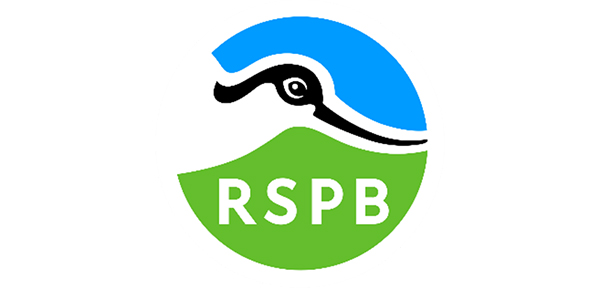Creating healthy peatland habitats
In a large-scale conservation programme in Wales, the bird and nature charity RSPB is using a suite of ArcGIS products to restore the health of precious peatland environments. It is able to plan restoration works very precisely and operate efficiently in remote, wild landscapes to create thriving new habitats where rare and endangered species can flourish again.
Peat formed over thousands of years is protected in restoration programme, managed using ArcGIS Pro
46 km2 area mapped using drone imagery, processed and analysed with ArcGIS Drone2Map and ArcGIS Pro
250 km of gullies, ditches and haggs blocked or reprofiled so far, by contractors using ArcGIS Field Maps
The Challenge
On the moorland surrounding Lake Vyrnwy in Wales, peat that had formed over a period of up to 3,500 years was degrading rapidly, with far-reaching consequences. In some locations as much as 20 years of peat formation was being lost in a single year. Unique habitats for rare plants and birds were declining in condition and the previously long-term peat accumulating carbon sink was becoming a carbon source.
With funding from the National Peatland Action Programme, Hafren Dyfrdwy (a subsidiary of Severn Trent) and other partners, RSPB Cymru (Wales) resolved to tackle the urgent problem and restore this precious peatland region. It aimed to create healthy wetland habitats where plant species could thrive to support stronger, sustainable ecosystems of insects and birds, whilst recreating conditions necessary for carbon sequestration.
“ArcGIS is pretty instrumental for a project of this scale, in a remote location.”
Ben Wilcox, Peatland Project Officer, RSPB Cymru
The Solution
RSPB Cymru’s Peatland Project Team began by creating a detailed digital map of the Lake Vyrnwy region in Esri’s ArcGIS Pro software. By digitising features that required intervention, valuable data on the health of the peatland was incorporated into the model, including the results of peat depth surveys. RSPB Cymru was then able to create a heatmap of the site, clearly showing the variation in peat depth and therefore identifying where peatland restoration is urgently needed.
Using drones, the project team conducted aerial surveys of the site, processing this data using ArcGIS Drone2Map. RSPB staff and volunteers then walked the site, using an app developed with ArcGIS Field Maps, to ‘ground truth’ the site plan and add restoration lines and features to the map while in the field.
In these ways, RSPB Cymru accurately digitised specific site features, such as gullies and ditches, and built up a highly detailed picture of the site in ArcGIS Pro. Around eight members of staff at RSPB Cymru now use this digital representation of the peatland on a daily basis to detect, analyse, prioritise, plan and manage restoration works.
The charity’s appointed contractors use an ArcGIS Field Maps app to navigate around the site and find where works need to be carried out. The app shows them the best routes for moving heavy machinery across the area to avoid damage to healthy sections of peatland. Contractors also use the app to mark changes, such as where dams have been constructed to form new pools.
The updates recorded by contractors in the ArcGIS Field Maps app are instantly visible to RSPB Cymru staff in ArcGIS Pro, enabling them to monitor projects very closely. Staff can also produce reports much more quickly, as they can instantly see live changes on site and use accurate data to produce maps for funders and other stakeholders.
“ArcGIS saves not only staff time, but also our contractors’ time, which enables us to deliver environmental projects very efficiently.”
Ben Wilcox, Peatland Project Officer, RSPB Cymru
Benefits
Greater understanding of peatland health
Visualising data in ArcGIS Pro gives RSPB Cymru and its partners a far clearer understanding of peatland health in the Lake Vyrnwy region. The maps generated, like the peat depth hotspot map, clearly show which areas need to be restored and where existing features like gullies are located across a vast moorland landscape of over 46 km2. “ArcGIS is pretty instrumental for a project of this scale, in a remote location,” says Ben Willcox, Peatland Project Officer at RSPB Cymru.
Effective planning of restoration works
RSPB Cymru can plan restoration works in specific locations with a fine degree of accuracy using ArcGIS Pro. Staff can work out the size of areas and the corresponding resources needed and cost of implementing remediation works. They can then create buffer areas around features to calculate the potential carbon savings. With this insight, the charity can approach funders with detailed information about the funding required to deliver tangible results in specific locations.
Time savings while working in the field
By empowering contractors and field-based staff with ArcGIS Field Maps, RSPB Cymru has ensured that all works carried out on site are completed as efficiently as possible. Everyone can view the same up-to-date maps in the field to see which areas have been improved and where works are taking place. “ArcGIS saves not only staff time, but also our contractors’ time, which enables us to deliver environmental projects very efficiently,” observes Willcox. “The more efficient we can be, the more we can achieve with our funding.”
Effective management of ongoing programme
While the peatland restoration programme at Lake Vyrnwy is still continuing, RSPB Cymru has already used ArcGIS Pro to manage many consecutive and sucessive restoration works across Wales effectively. By March 2024, the organisation had successfully rewet over 1,078 hectares of land, built 38,400 dams and blocked and reprofiled over 250 km of gullies, ditches and peat haggs, enough to stretch from Swansea to London. It has, therefore, significantly improved conditions for peat generation, leading to greater carbon sequestration and water retention, allevitating both flooding and drought effects.
Healthy habitats for special species
This highly successful ArcGIS-led project, is undoubtedly having a very positive impact on habitats and biodiversity. Across the site, rare species including sphagnum mosses and carnivorous sundew plants are becoming reestablished. Golden plovers are using recently restored peatland on the reserve for the first time in 25 years, and some of Britain’s rarest birds of prey, Hen harriers, Merlin and Hobby are relying on these sites as important foraging habitat. As Willcox rightly says, “Peatland is a rare, unique habitat, so when it is in good condition it attracts some very special species.”



